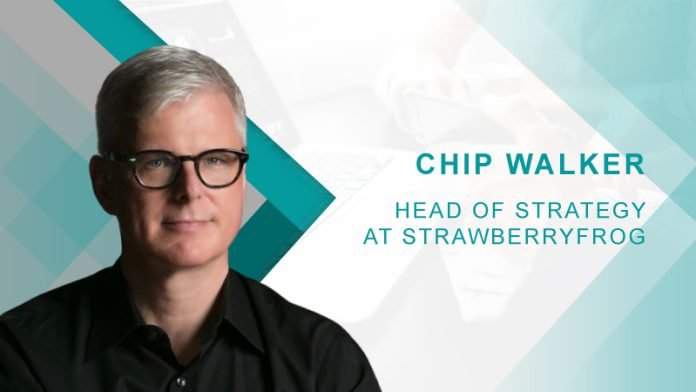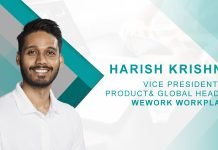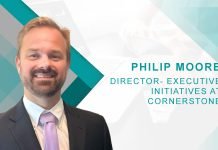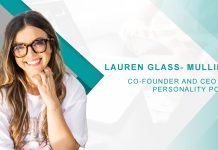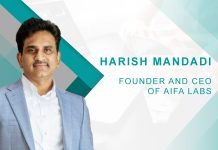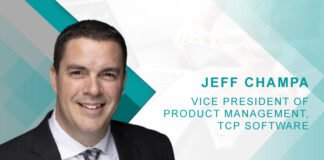1. Chip, thank you for being here. Could you share a bit about your professional journey and how it led to your role as the Head of Strategy at StrawberryFrog?
A: It’s been quite a journey! I started out my career in strategy and planning at Wunderman, which led to eventually becoming the Chief Planning Officer at BBDO. But by then I was already starting to form my own point of view on the importance of being purposeful in business. And when I looked around I found that StrawberryFrog was the only firm that seemed to share my point of view and who were actively doing something about it. That’s how I ended up here for the first time, as the Head of Planning. I spent about four years in that position, before moving on to Y&R and then a few independent gigs. But StrawberryFrog was always in the back of my mind. And when our CEO, Scott Goodson, reached out to me with a vision of expanding the purview of the agency relationship to encompass every aspect of purpose throughout the business, I jumped at the opportunity.
2. As Head of Strategy, how do you shape strategies for the post-pandemic workplace, considering the emphasis on meaning, purpose, and innovative solutions like Movement Thinking?
A: I know it might sound a bit cliche, but it all starts with listening. Both during and immediately after the pandemic, employees were coming to terms with new priorities for their lives. They weren’t satisfied with going back to the same meaningless tasks. They wanted to know how they fit into the organization’s bigger picture. Meanwhile, their executive leadership teams were acting as if they were in a bubble, blindly assuming it would be a passing phase—that workers would somehow just get over it. That’s why when we consult with a business about improving their workplace, we start by focusing on what employees are truly trying to communicate to their leaders. Only then can we find the sweet spot in forming an effective strategy that addresses the needs of all the stakeholders.
3. Your “WorkShift“ study highlights meaningful motivators as key drivers for employee commitment. How does StrawberryFrog incorporate these motivators into its strategies?
A: Every company is different, so there’s no one single way that we incorporate employee motivators into a workplace. In fact, our study found that canned solutions like contests, prizes and benefits can sometimes even work against building commitment and purpose among employees. Instead, we look at the expressed need, evaluate senior leadership’s strengths in dealing with the concern, and then form a strategy that keys into these strengths. Sometimes it’s a simple matter of finding a more personalized approach to communicating a bigger purpose to the employee. Other times it comes down to a need to lead more strongly through example. Good strategy only reveals itself once you take the time to truly understand both the nature of the need and the ability of the company to address it.
4. Given your experience and the study’s findings, what advice would you offer professionals and leaders looking to create more fulfilling work environments?
A: We need to step outside of the executive bubble more frequently and listen more closely to what employees are saying to us. Not everything you hear will be actionable, but the aggregate of what you hear will always reveal the true state of your employee satisfaction. Also, your willingness to invest in change and commit to seeing change come to fruition is essential. You can say that your business is now eco-friendly, but it’s meaningless unless you’re willing to spend money on improving your manufacturing processes and commit to higher standards going forward. And finally, be transparent with your employees about the state of your company’s purpose. After all, they’re not looking for you to be perfect. They’re just looking to be part of something bigger. So let them in and make them a part of your challenges.
5. Do you see a resurgence of purpose in corporate culture, and how is it being recognised and integrated?
A: I think we’ve experienced some backsliding on this front. Which is a bit troubling, considering the desperate need expressed by the workers who participated in our study for more purpose in their roles. But where we do see purpose being applied, we find more satisfied workforces, employees who are more committed to the organization, more brand loyalty from customers, and higher profitability overall. Having a strong organizational purpose really does transform businesses.
6. What specific insights did your research uncover about Gen Z in relation to broader workforce trends?
A: Gen Z employees are clearly leading the charge in expressing a need for more purpose in their daily work life. They’re the most passionate about their causes and the least likely to respond to placating actions from senior management. Without a deeper meaning attached to their tasks, they quickly lose interest in their job and simply go elsewhere. And since they are the youngest generation currently in the workforce, leaving their needs unaddressed could have dire consequences for employers in need of new and productive talent over the foreseeable future.
7. The study reveals a disconnect between senior leadership and the workforce. How can organisations bridge this gap and better address the needs of their employees?
A: Employees may have many things to say to you, but that doesn’t mean they feel comfortable sharing these thoughts. You can’t just drop a suggestion box on the plant floor and wait for the comments to roll in. Senior leadership needs to proactively reach out to employees on a regular basis and build trust with them. Once you prove that they can say anything to you without repercussions, then you’ll hear the truth. And yes, I know that no executive has the time for this. But they have to make the time or else deal with the expense and hassle of a constantly churning workforce.
8. How can organisations proactively prevent employees from silently disengaging?
A: Again, it all comes down to safety and trust. Employees want to share their thoughts and concerns, but won’t take the risk in an unwelcoming environment. And if you don’t think this a big issue for you, consider the fact that a silently disgruntled employee costs the average company thousands upon thousands in lost productivity, plus recruitment costs once they decide to leave. That’s what’s really at stake here.
9. Based on your research, what’s the current mood of the workforce, and can you highlight any notable shifts?
A: The biggest findings of the study were that a majority of the rank-and-file workforce are dissatisfied with their current job and that they find their daily tasks to be completely devoid of meaning. Further, we found that most of these employees are only staying in their role to avoid the hassles of looking for a new job. So essentially they are sleep-walking through their work with lower engagement and less productivity. Plus, to make matters worse, top-level managers are living in what we call a “thriving bubble,” where they wrongly believe their company has a vibrant and engaged purpose that is actively inspiring employees. It’s really pretty remarkable how little communication is happening within the average business operation these days.
10. Considering the transformative impact of the pandemic, what are your final thoughts on the future of the workplace, and how do you envision companies embracing these insights?
A: The current situation is untenable and business leaders will soon become painfully aware of it, if they haven’t already. Downward pressure on profitability and productivity is coming face-to-face with employee dissatisfaction and apathy—and the executive bubble is about to burst. However there are reasonable strategies for meeting these challenges and giving organizations a true sense of purpose again. I’m firmly of the opinion that businesses are exhausted after three years of post-pandemic upheaval, and they’ll soon be looking for new solutions that can inspire the workforce. And that’s exactly what having a strong purpose and more meaningful jobs will do for them. I truly believe we’re on the precipice of some truly remarkable long-term, positive shifts within the workplace.
Explore HRtech News for the latest Tech Trends in Human Resources Technology.
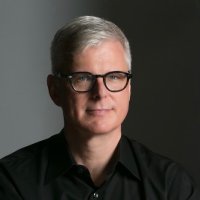
Chip Walker Head of Strategy at StrawberryFrog
Chip Walker, based in New York, is the head of strategy and a partner at StrawberryFrog. He’s recognized for his expertise in brand creation and re-invention, and has led the charge in transforming brands such as Goldman Sachs, Lexus, Bank of America, Jim Beam, and Heineken. Chip is a frequent speaker at some of the branding world’s major events, including the Cannes Lions Festival, the Advertising Research Foundation, Sustainable Brands and the Conference Board. His writing and opinions have appeared widely in places like Adweek, the New York Times, Chicago Tribune and CNBC.

